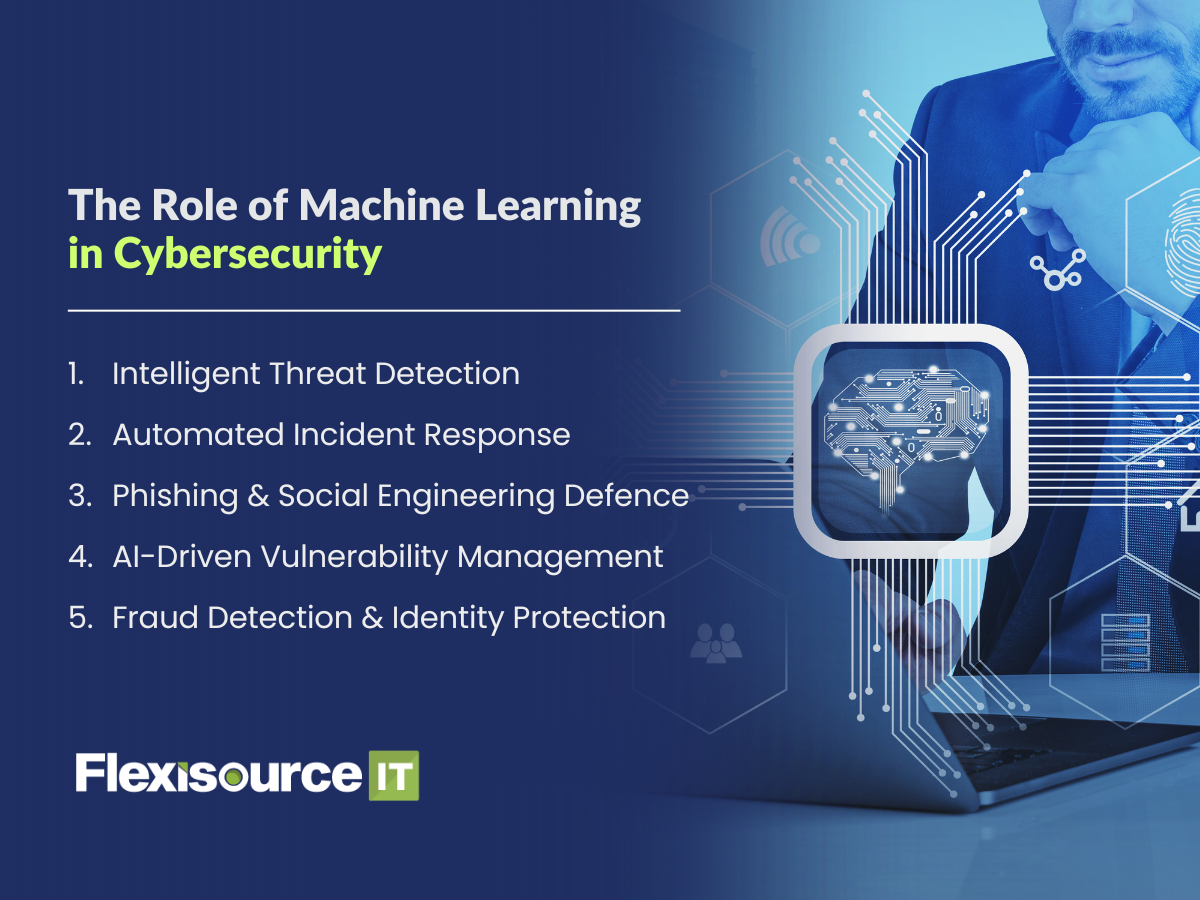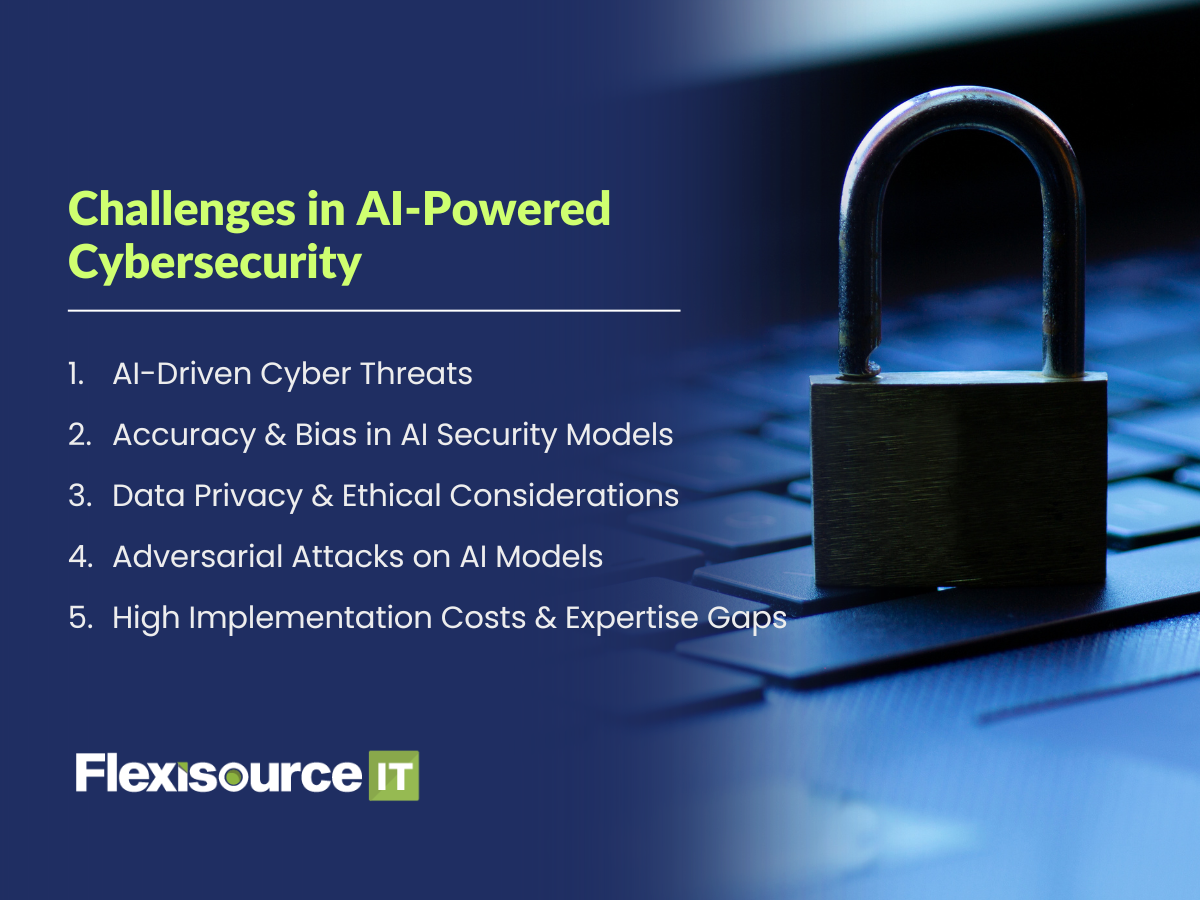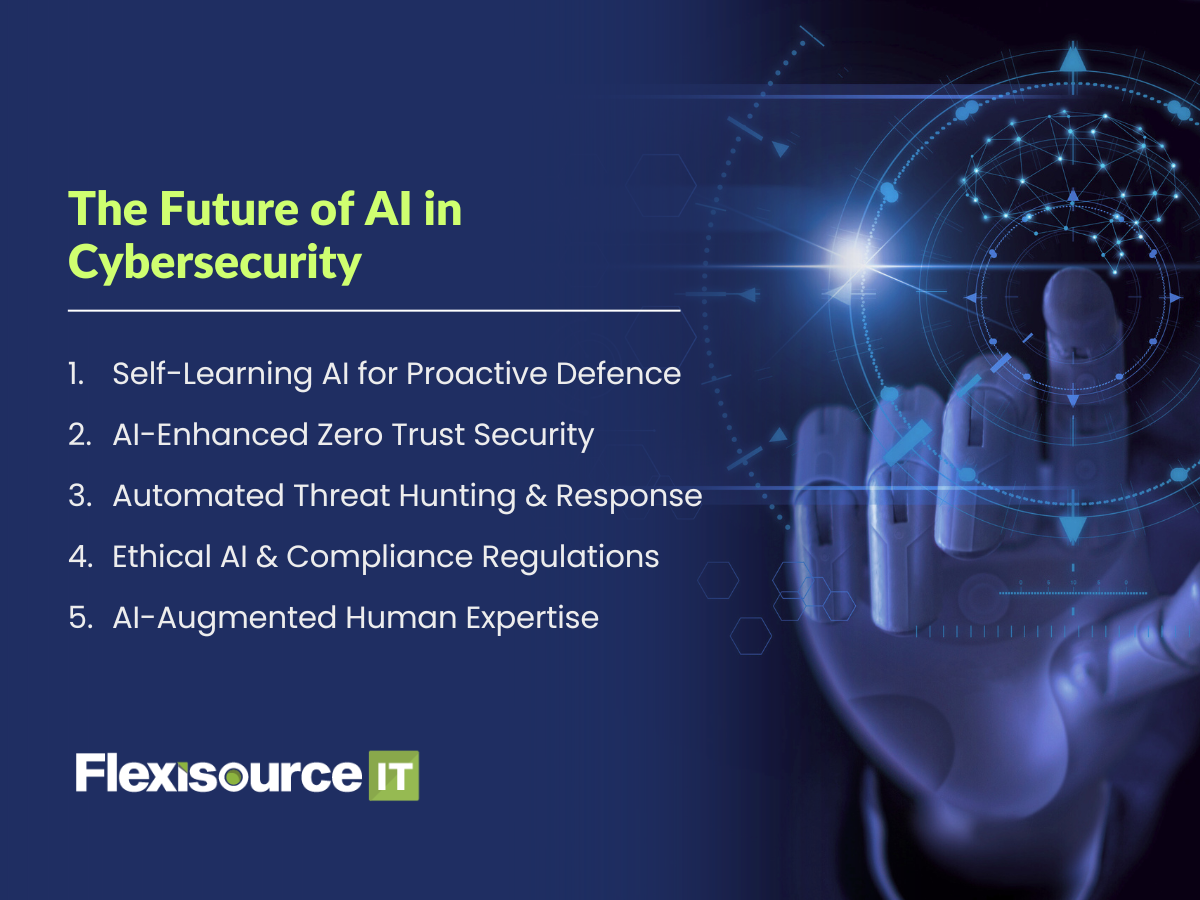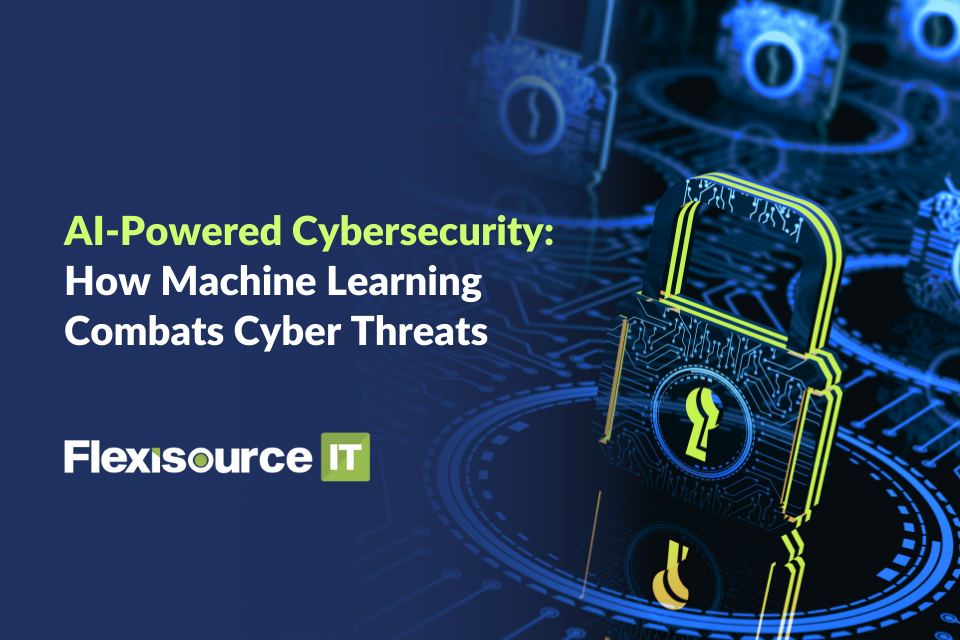Cyber threats are advancing rapidly, with attackers using AI-driven malware, deepfake scams, and sophisticated phishing techniques. Traditional security measures are struggling to keep pace, making AI-powered cybersecurity a critical defence strategy. Machine learning (ML) enhances security by detecting threats, automating responses, and predicting cyberattacks before they occur. However, organisations must also navigate challenges such as adversarial attacks, data privacy concerns, and AI biases to ensure cybersecurity remains effective and reliable.
The Role of Machine Learning in Cybersecurity
ML is revolutionising cybersecurity by enabling intelligent, adaptive threat detection and response. Unlike rule-based systems, ML models continuously learn from evolving cyberattack patterns, improving their ability to identify and prevent security breaches.

Intelligent Threat Detection
Traditional security tools rely on predefined signatures, making them ineffective against emerging threats. ML-powered security systems overcome this limitation by identifying anomalies in real time. Anomaly detection algorithms assess network traffic to detect deviations from normal behaviour, while deep learning models recognise new malware strains before execution. Additionally, supervised ML models predict cyberattacks based on historical security logs. By continuously adapting to new threats, ML-driven security solutions offer proactive protection.
Automated Incident Response
Cyberattacks require rapid responses to prevent significant damage. ML-powered automation enhances incident response by dynamically adjusting security measures based on attack patterns. Automated containment mechanisms isolate compromised devices to prevent lateral movement, while AI-driven patch management applies security updates before vulnerabilities are exploited. By reducing manual intervention, ML-driven automation significantly improves response times and security resilience.
Phishing & Social Engineering Defence
Phishing attacks are becoming more sophisticated, making them difficult to detect with traditional security filters. ML-powered cybersecurity strengthens defences by leveraging natural language processing (NLP) models to analyse email content and identify deceptive messages. Computer vision algorithms detect fraudulent login pages designed for credential theft, while behavioural analysis flags phishing attempts based on unusual user interactions. This AI-driven approach enhances protection against phishing and social engineering attacks.
AI-Driven Vulnerability Management
Cybercriminals exploit security weaknesses before organisations can patch them, making proactive vulnerability management essential. ML enhances security by predicting exploitability based on real-world attack patterns and prioritising vulnerabilities using risk-scoring models. Additionally, automated patch deployment reduces the window of exposure to cyber threats. By leveraging AI-powered cybersecurity, organisations can stay ahead of attackers and minimise security risks.
Fraud Detection & Identity Protection
ML enhances fraud detection and identity verification by analysing user behaviour, such as typing speed and mouse movement, to strengthen authentication processes. It detects financial fraud by monitoring transaction patterns for anomalies and uses advanced algorithms to flag suspicious activities before they result in security breaches. These AI-powered capabilities help prevent unauthorised access and fraudulent transactions while ensuring compliance with industry regulations.
Challenges in AI-Powered Cybersecurity
While ML strengthens security, it also introduces new challenges that must be addressed.

AI-Driven Cyber Threats
Cybercriminals are leveraging machine learning to create more advanced attacks. AI-generated deepfake scams are used for identity fraud, while self-learning malware adapts in real time to evade detection. Additionally, ML-powered phishing campaigns craft highly personalised attack emails that bypass traditional security filters. To counter these evolving threats, security teams must continuously train AI models to identify and neutralise emerging cyber risks.
Accuracy & Bias in AI Security Models
ML models must balance high detection rates with low false positives to prevent disruption to legitimate activities. Excessive false positives can overwhelm security teams with unnecessary alerts, while false negatives allow real threats to bypass detection. Bias in training data can also create security blind spots, leaving vulnerabilities unaddressed. Regular model retraining and bias mitigation strategies are essential for improving detection accuracy and minimising unintended security gaps.
Data Privacy & Ethical Considerations
AI-powered cybersecurity relies on vast data collection, increasing the risk of a data breach and raising privacy concerns. Organisations must comply with regulations like the GDPR and Australia’s Privacy Act to ensure responsible data handling. AI transparency is also essential to justify security decisions and prevent black-box decision-making.
Adversarial Attacks on AI Models
Hackers can exploit AI security models through adversarial machine learning techniques. Data poisoning attacks corrupt training datasets, leading to flawed security predictions, while adversarial perturbations trick AI into misclassifying threats. Additionally, advanced evasion techniques disguise malware to bypass detection, rendering traditional security defences ineffective. To combat these threats, robust defensive AI training and adversarial resilience techniques must be implemented.
High Implementation Costs & Expertise Gaps
Implementing AI-powered cybersecurity requires substantial investment and skilled professionals. High-performance computing resources are needed for real-time threat analysis, while continuous AI model training is necessary to counter evolving cyber threats. However, a shortage of AI and cybersecurity specialists makes implementation challenging. Despite the costs, investing in AI-driven security provides long-term benefits by mitigating cyber risks and fortifying organisational defences.
The Future of AI in Cybersecurity
As cyber threats evolve, AI-powered cybersecurity will continue advancing, incorporating self-learning AI, Zero Trust security, and automated fraud prevention.

Self-Learning AI for Proactive Defence
Future ML-driven cybersecurity systems will utilise unsupervised learning to detect previously unknown threats, employ reinforcement learning for adaptive security responses, and apply predictive analytics to anticipate cyberattacks before they occur. These advancements will enable security systems to respond dynamically to emerging cyber threats.
AI-Enhanced Zero Trust Security
Zero Trust security assumes no entity is inherently trustworthy. AI strengthens this model by analysing user behaviour for continuous authentication, detecting insider threats through anomaly detection, and enforcing dynamic security policies based on ML insights. This approach minimises unauthorised access risks and enhances internal security.
Automated Threat Hunting & Response
AI-driven cybersecurity tools will continuously scan for undetected cyber threats using deep learning techniques, predict vulnerabilities before attackers exploit them, and automate security responses to neutralise attacks instantly. These capabilities will significantly reduce response times and improve security resilience.
Ethical AI & Compliance Regulations
As AI-powered cybersecurity evolves, ethical and regulatory concerns will influence its adoption. Organisations must ensure AI transparency to build trust in automated security decisions, comply with evolving cybersecurity laws to avoid legal risks, and address AI biases to create fair and effective security solutions. By prioritising ethical AI practices, businesses can maintain public trust while strengthening cybersecurity.
AI-Augmented Human Expertise
AI will not replace cybersecurity professionals but will instead enhance their capabilities. AI-driven tools will assist security analysts by automating routine tasks, providing intelligent threat insights, and improving decision-making processes. As AI continues to develop, collaboration between human expertise and machine intelligence will be essential for staying ahead of sophisticated cyber threats.
Conclusion
Machine learning is transforming cybersecurity by enabling faster threat detection, real-time response, and predictive analytics. While AI-powered cybersecurity strengthens digital protection, it also presents challenges such as adversarial threats and data privacy concerns. To remain resilient against cyberattacks, organisations must invest in responsible AI deployment, skilled cybersecurity professionals, and proactive defence strategies. With ML-driven cybersecurity solutions, businesses can build a secure digital future while staying ahead of evolving cyber threats. Ready to strengthen your cybersecurity with AI? Contact Flexisource IT today—our experts are here to help!







